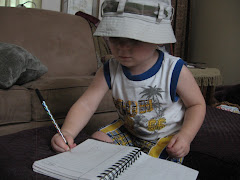What do you get when you cross a realistic story with magic? Or an urban setting with supernatural? Or 19th century machinery with 21st century characters?
In many cases you get an interesting blend of genres. “Magical Realism,” “Urban Fantasy,” and “Steampunk” are all types of blended genres where the lines between one genre and another are so blurred that librarians begin to find it challenging to categorize them.
Blended genres provide opportunities for authors to develop characters and plot lines in lots of ways. Suspending reality as if that suspension is in itself realistic or “normal,” for example, allows an author to get creative with the storyline without having to worry about explaining every occurrence in the magical realm of the story. Stories can maintain strong realistic and contemporary sensibilities while reaching beyond them to borrow from folk tales, fables and myths.
Steampunk, another type of blended genre, is a combination of many aspects of the here and now coupled with machines and technology from the Victorian era. Think Wild, Wild West with Will Smith and Kevin Kline. In that movie, part of the "now" included the advanced technology of the huge robotic spider while most of the story was set in the 1800s with trains and other machines of that era.
Here are some examples of blended genres found in Young Adult literature:
Fisher, Catherine. Incarceron. (2007)
This steampunk novel crosses futuristic technology with Victorian devices such as dungeons and torture chambers. Finn was born inside the prison known as Incarceron. Claudia, the warden’s daughter lives in an elaborately constructed setting where she is engaged to be married to someone she did not choose. Claudia and Finn find a key which allows them to communicate with each other. They begin a plan to get Finn out of the prison. An interesting thing about this story is the fact that Incarceron – the building itself – is a sentient being, making it a character in and of itself.
McMann, Lisa. Cryer’s Cross. (2011)
Kendall has grown up in Cryer’s Cross, Montana. While she loves her small town, she dreams of something more. Unfortunately, those dreams are pushed aside when teens start to disappear, including her boyfriend, Nico. Enter ghosts and witchcraft for the blended genre. This novel has that creepy horror-story grab that is rife with anxiety and suspense. This book does not have the gore that many think of when they think “horror,” but instead the old-fashioned don’t-know-what’s-going-to-happen-next type of thriller that keeps the reader on the edge of the seat while covered in goosebumps.
Durst, Sarah Beth. Enchanted Ivy. (2010)
Lily wants to go to Princeton more than anything else. She is offered immediate acceptance if she can pass the Legacy Test which involves finding the Ivy key. This quest takes her on a trip into a magical Princeton where gargoyles come to life and she needs a protector. I found some things to be a bit predictable (nerdy girl falls for bad boy, for example), but Lily’s quest was interesting and on the scary side.
GUEST POST: Chris Baron on SPARK
7 months ago
















